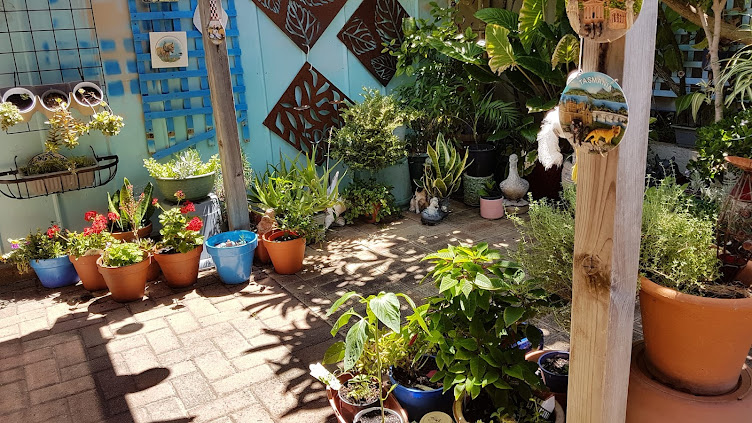These intriguing ceramic jelly moulds came from Auntie Jessie. They were given to her by a family friend, Mrs Labender, who was the cook at Quernmore House near Caton. A Google search reveals that they are Victorian and similar to item W11421 on this page. These two are stackable and the larger one is about 9inches tall.
I've never used them but cherish them because of their provenance.
I think they could be used in one of those guessing games we see on TV. Do you have any jelly moulds? Do you still make jelly for your family?
It's pouring down here so the washing will have to go on the on the verandah on the clothes horse....that's something else that was also around in the 19century!
Enjoy your day, where ever you are,
Love, Sue
xxx
* antique tends to mean anything over 100yrs old and is collected or valuable for it's form, rarity or personal emotional value according to wiki.
I've never used them but cherish them because of their provenance.
I think they could be used in one of those guessing games we see on TV. Do you have any jelly moulds? Do you still make jelly for your family?
It's pouring down here so the washing will have to go on the on the verandah on the clothes horse....that's something else that was also around in the 19century!
Enjoy your day, where ever you are,
Love, Sue
xxx
* antique tends to mean anything over 100yrs old and is collected or valuable for it's form, rarity or personal emotional value according to wiki.




Wow I've never seen anything like those before. I have a heavy glass jelly mould that belonged to my Grandmother. I love jelly but don't eat it now, even the vegetarian version. Too much sugar and other stuff.
ReplyDeleteHow about setting some fresh fruit juice in agar, Lisa...would that work? Healthy and cooling for Summer.
ReplyDeleteLove Sue
xx
They are the strangest things I've ever seen. I wonder what the actual jelly looks like out of the mould? Would it come out of the mould? TFS
ReplyDeletethey're not pretty at all...just interesting. there was quite a craze for fancy jellies in Victorian times...there's a wonderful mould called the 2-part creamware core obelisk mold at this link http://www.historicfood.com/Jellies.htm
ReplyDeletethanks for visiting Chris xxx
These are for making jellies with fillings, or a core in a contrasting color. Fill the outer mold with jelly, with the inner mold full of water or something else to weight it down, then when set, gently remove the inner mold and pour tepid jelly or other filling into the hollow core and allow to set.
ReplyDeleteNo. these moulds were known as steeple moulds. They started life in the 17th century when cooks moulded blancmanges called steeple creams in the conical wine glasses of the day. In the 18th century, Josiah Wedgewood started making moulds just like yours. They remained popular during the nineteenth century and were still being made in the early 1900s by Spode. The reason for their popularity is the hilarity which the unmoulded blancmanges or jellies caused. The stepped cone creates a very unstable jelly which wobbles in a rather suggestive and amusing way. Here is a link to a detailed article about your moulds, including a video of the very badly behaved jelly that they make. Emjoy! http://foodhistorjottings.blogspot.co.uk/2012/06/spanish-paps-and-steeple-creams.html
ReplyDeletethank you Ivan, it was quite difficult even in this day and age to find out about them
Deletex
http://foodhistorjottings.blogspot.com.au/2012/06/spanish-paps-and-steeple-creams.html?showComment=1398851117879#c8281704823138876802
Delete